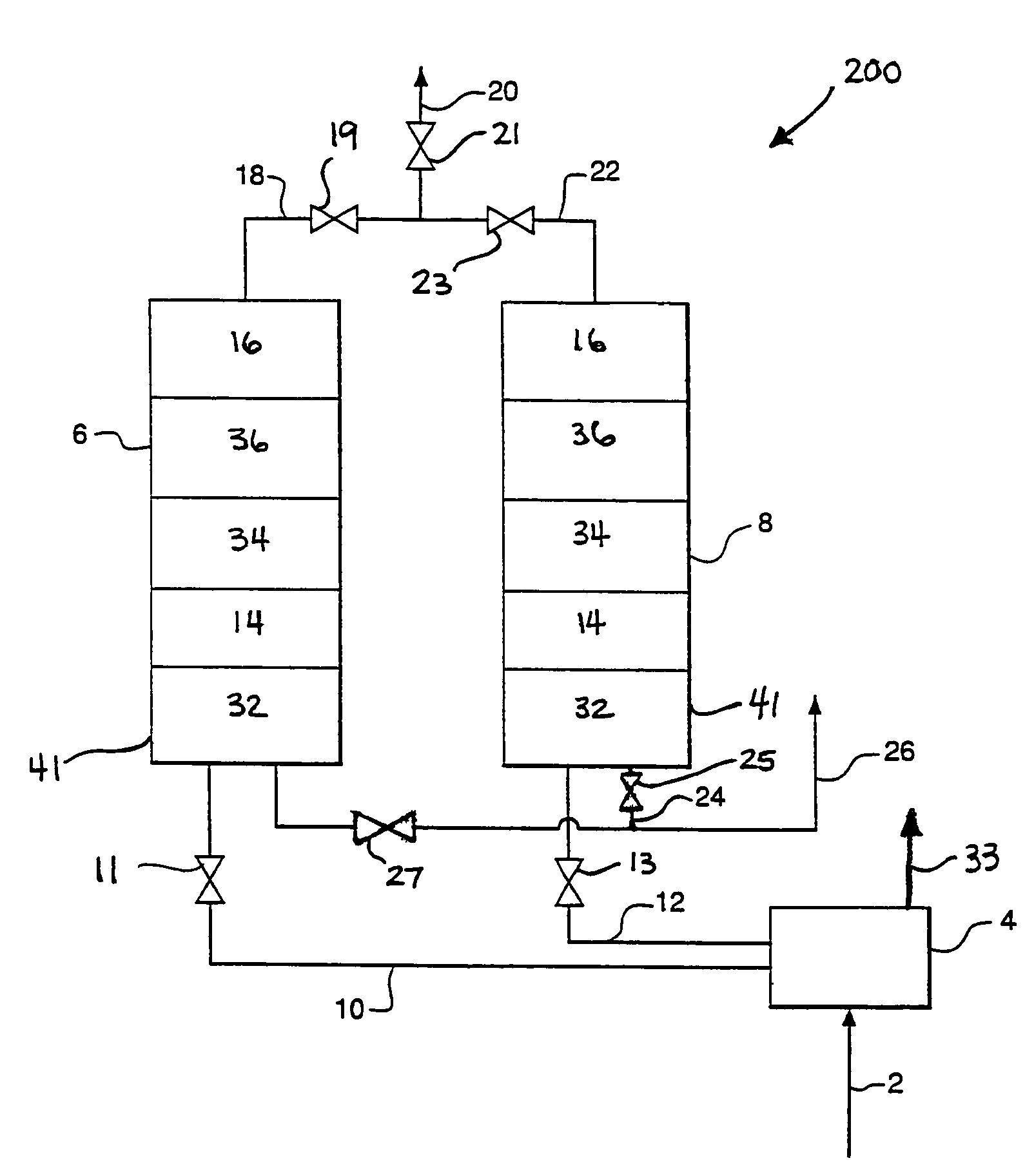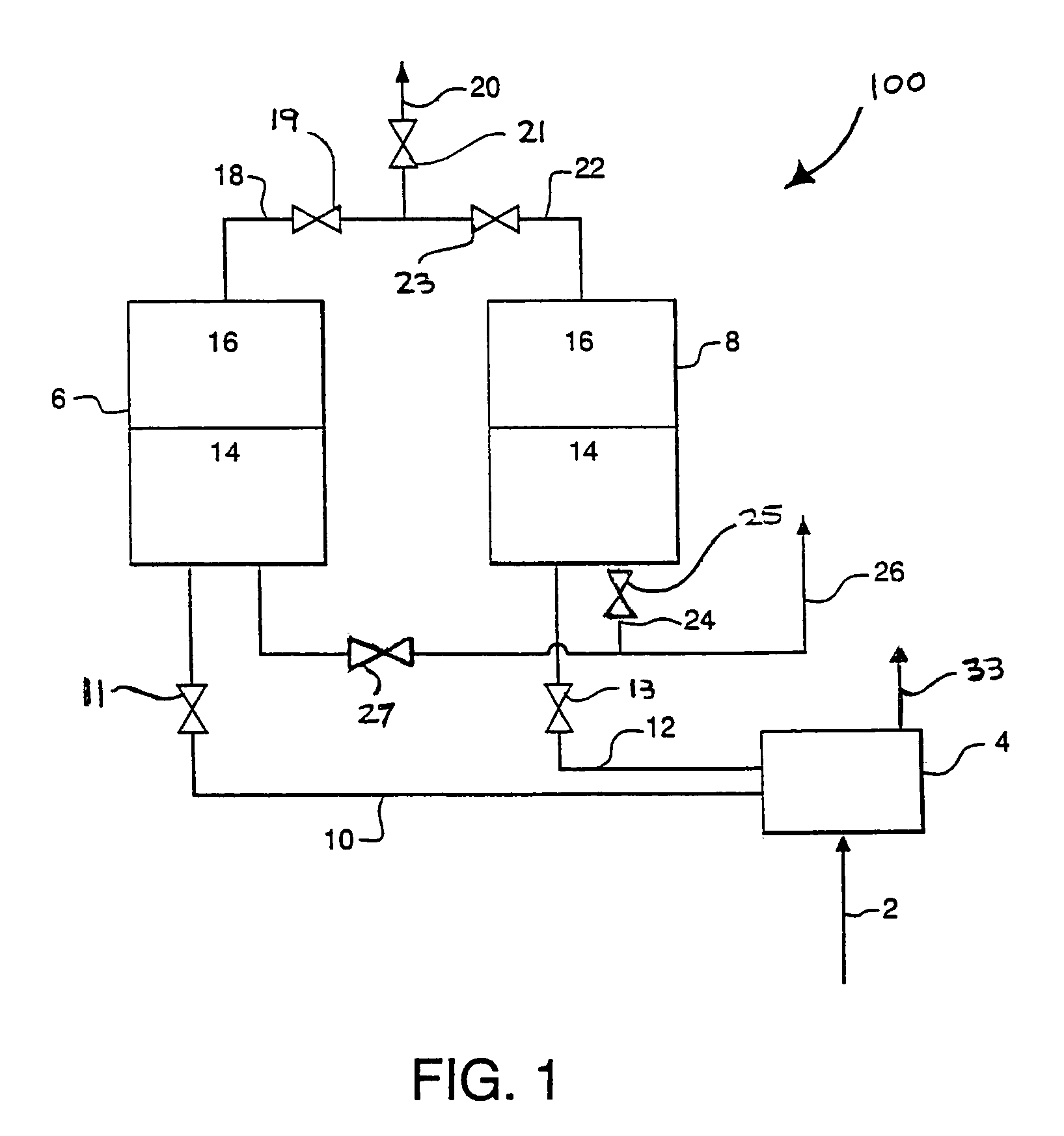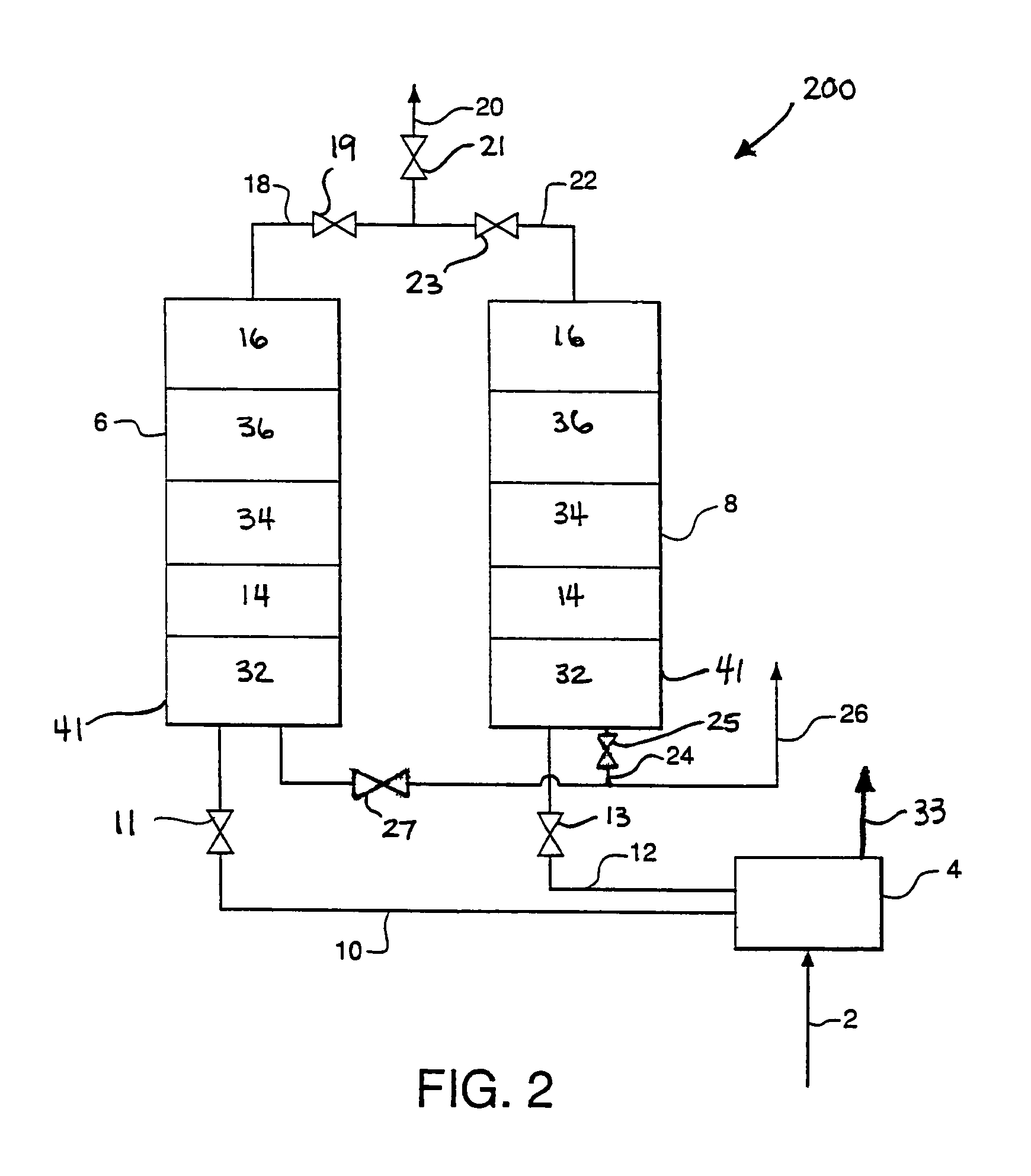Apparatus and process for air cleaning
a technology of apparatus and air cleaning, applied in the direction of heating types, separation processes, applications, etc., can solve the problems of poor indoor air quality in homes and office buildings, insufficient concentration of radon gas, and respiratory problems in peopl
- Summary
- Abstract
- Description
- Claims
- Application Information
AI Technical Summary
Benefits of technology
Problems solved by technology
Method used
Image
Examples
example 1
Effectiveness of AgLi X Zeolite for Radon Removal
[0034]The adsorption of radon was monitored by passing 140 Nm3 of dry air per hour through an adsorption vessel at 30° C. that contained 340 kgs of a zeolite. The particular zeolite used was an X zeolite with 20% of its ion exchange capacity occupied by Ag+ ions and 80% occupied by Li+ ions. The zeolite was manufactured by Zeochem, Inc. using the ion exchange of silver into LiX zeolite. After 84 hours of operation, no radon breakthrough was detected. The minimum radon capacity calculated from this test is 140 Nm3 / hr×84 hours×1 / 340 kgs=34.6 Nm3 / kg of adsorbent. The capacity of activated carbon for radon quoted by Scarpitta (Health Physics, Volume 68, Number 3, March 1995, pp 332-339) is 3.7 Nm3 / kg of carbon at 30° C. and 0% RH. The results of this test show that the equilibrium capacity of AgLiX zeolite is at least about 10 times greater than that for the industry standard radon adsorbent, activated carbon.
example 2
Removal of Carbon Monoxide Using Silver Exchanged Zeolite
[0035]Another air impurity, which is known to cause respiratory problems, is carbon monoxide. To determine the effectiveness of the silver exchanged zeolites for carbon monoxide removal, the adsorption of carbon monoxide was measured on the AgLiX zeolite employed in Example 1. Adsorption isotherms were compared with that for BPL activated carbon from Calgon, Inc. The results clearly show that the AgLiX material has significantly higher CO capacity than activated carbon at low CO partial pressure. The initial CO isotherm slopes (Henry's Law constants) for AgLiX and activated carbon are 357 and 0.58 mmole / g / atm, respectively. The AgLiX material has over a 600 times greater capacity at low CO partial pressure than the activated carbon.
[0036]The CO capacity of AgLiX is high enough to use this material for (cyclic) removal of CO from indoor air in an apparatus or process of this invention. If the feed pressure to the adsorptive air...
example 3
Adsorption of Carbon Monoxide Using CaX Zeolite
[0037]40 grams of CaX from LaPorte Industries was ion exchanged with 1 liter of 0.1N AgNO3 at 25° C. for 16 hours. After ion exchange the samples were washed with 8 liters of distilled water. The adsorption of CO was measured on the untreated and ion-exchanged samples at 30° C. after the samples were thermally regenerated in flowing N2 at 400° C. for 12 hours. The Henry's Law constants and selectivities are given in the table below:
[0038]
(mmole / g / atm)(mmole / g / atm)AdsorbentKHCOKHN2SHCaX18.21.512.1Ag / CaX125.00.3416.7
The results show that exchange of Ag+ in CaX zeolite produces an adsorbent with the properties required for trace CO removal, i.e., 1) high CO / N2 selectivity and 2) high CO capacity at low CO partial pressure. This example shows that the silver exchanged zeolite does not have to have lithium co-ions to demonstrate high carbon monoxide capacity, and is useful in an apparatus or process of this invention for that purpose.
PUM
| Property | Measurement | Unit |
|---|---|---|
| pressures | aaaaa | aaaaa |
| temperatures | aaaaa | aaaaa |
| temperatures | aaaaa | aaaaa |
Abstract
Description
Claims
Application Information
 Login to View More
Login to View More - R&D
- Intellectual Property
- Life Sciences
- Materials
- Tech Scout
- Unparalleled Data Quality
- Higher Quality Content
- 60% Fewer Hallucinations
Browse by: Latest US Patents, China's latest patents, Technical Efficacy Thesaurus, Application Domain, Technology Topic, Popular Technical Reports.
© 2025 PatSnap. All rights reserved.Legal|Privacy policy|Modern Slavery Act Transparency Statement|Sitemap|About US| Contact US: help@patsnap.com



